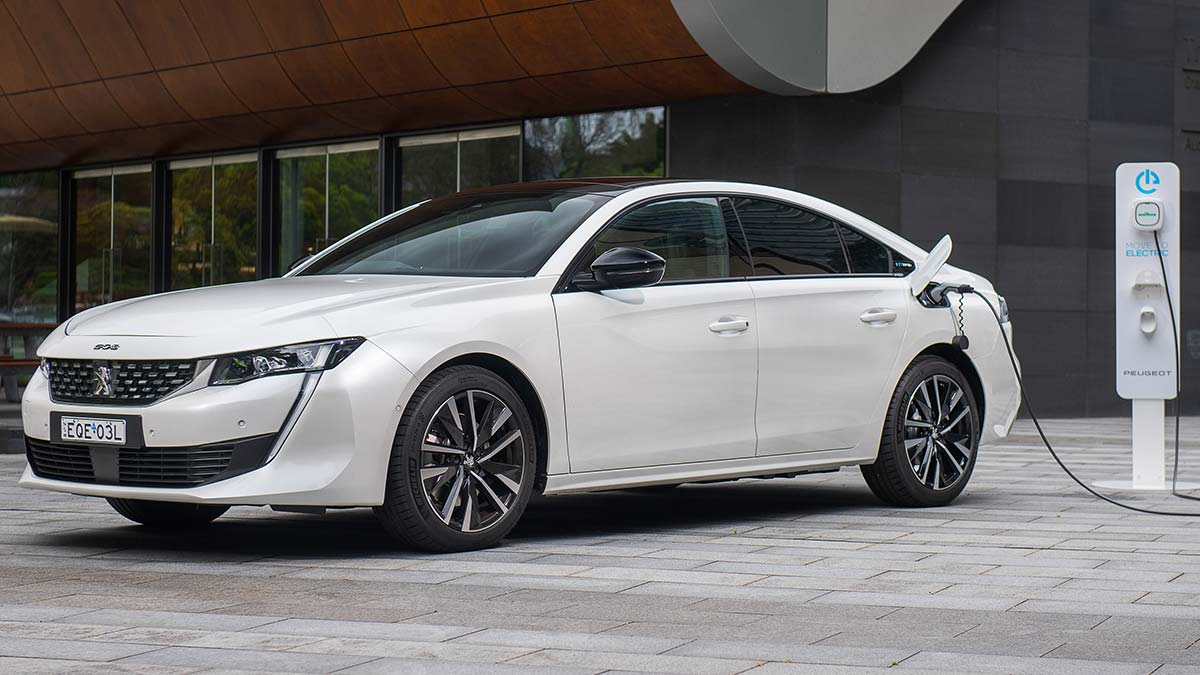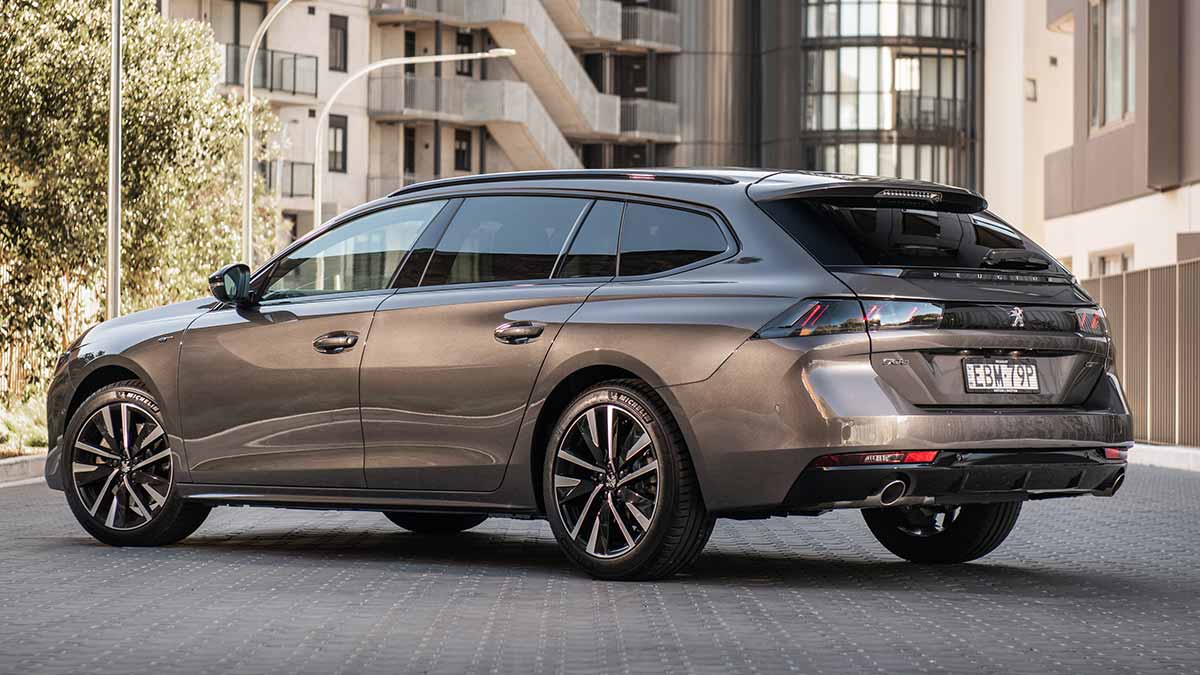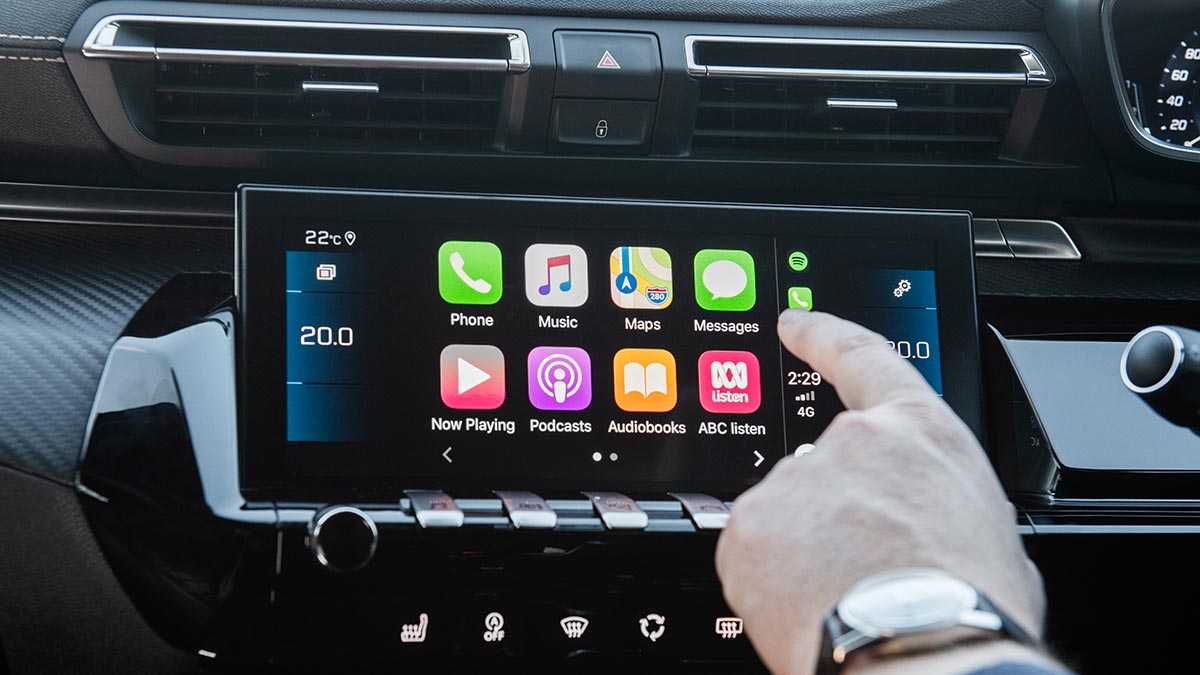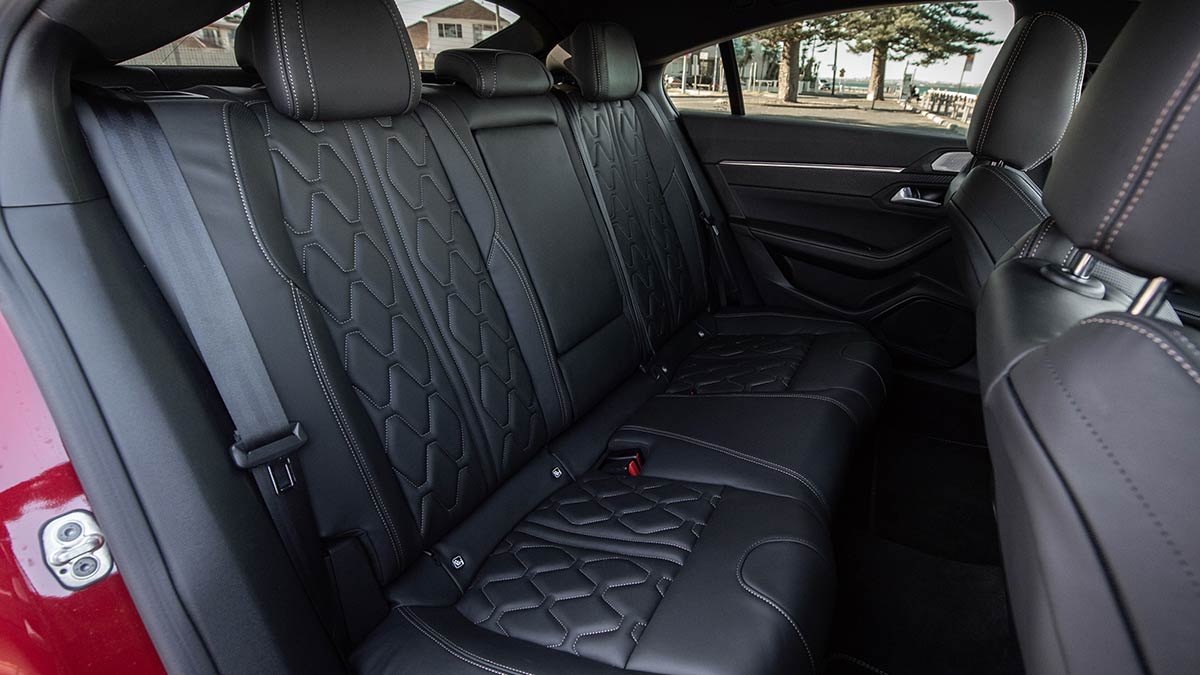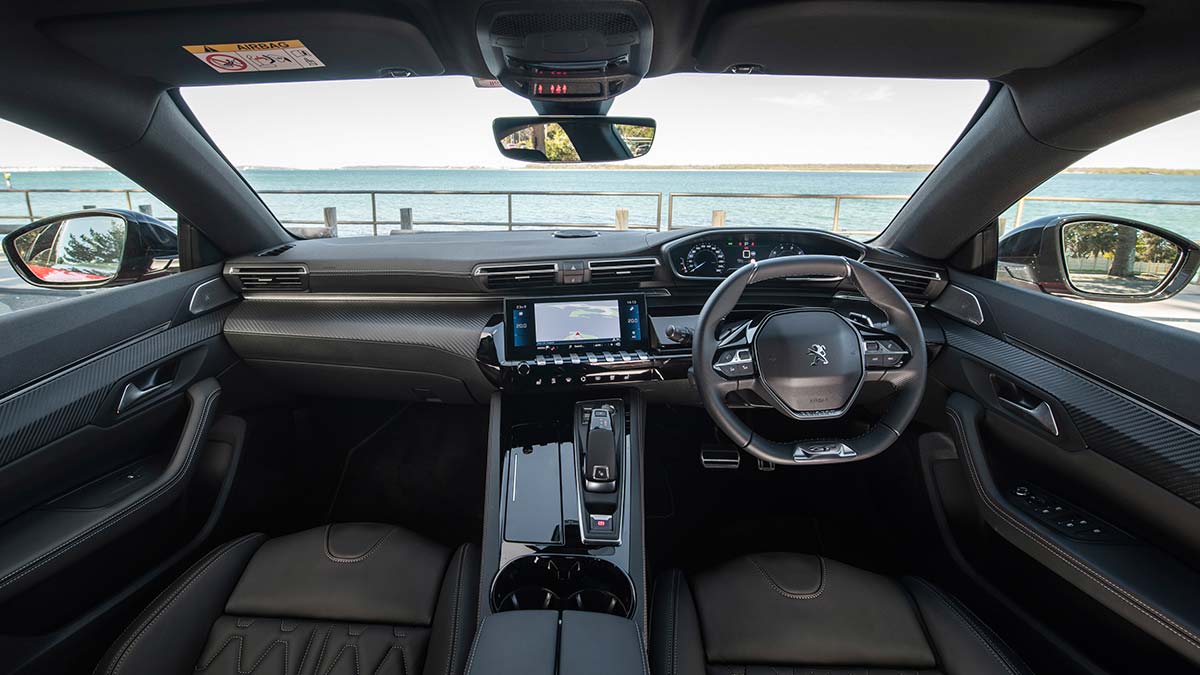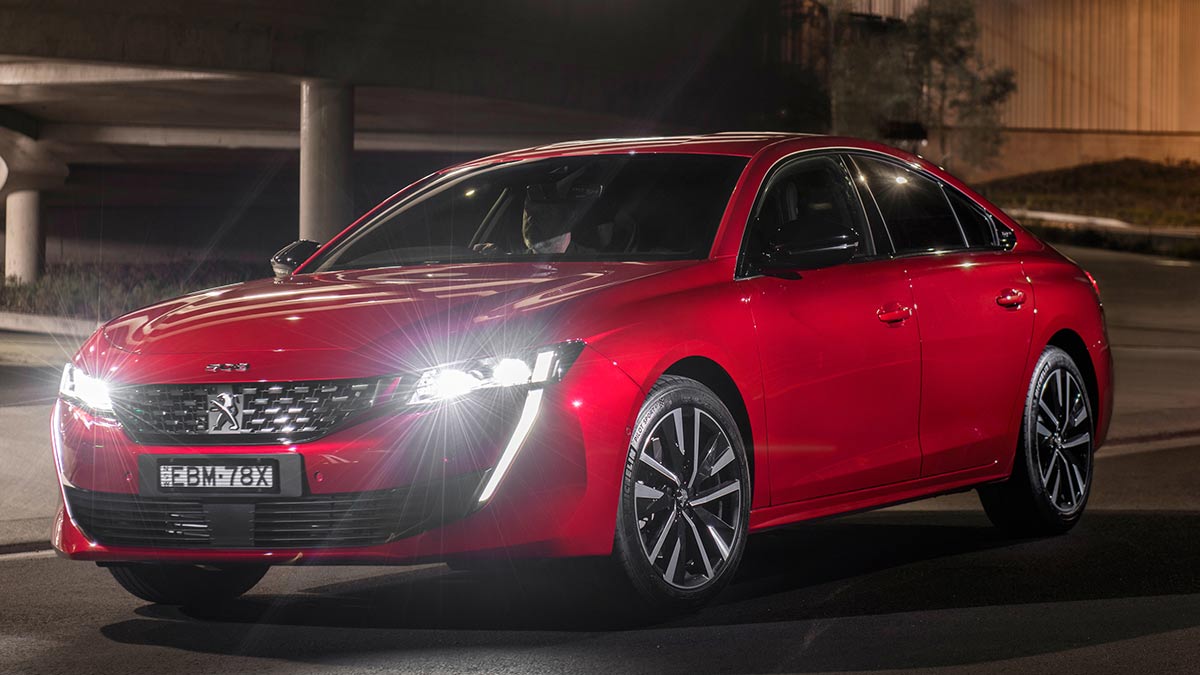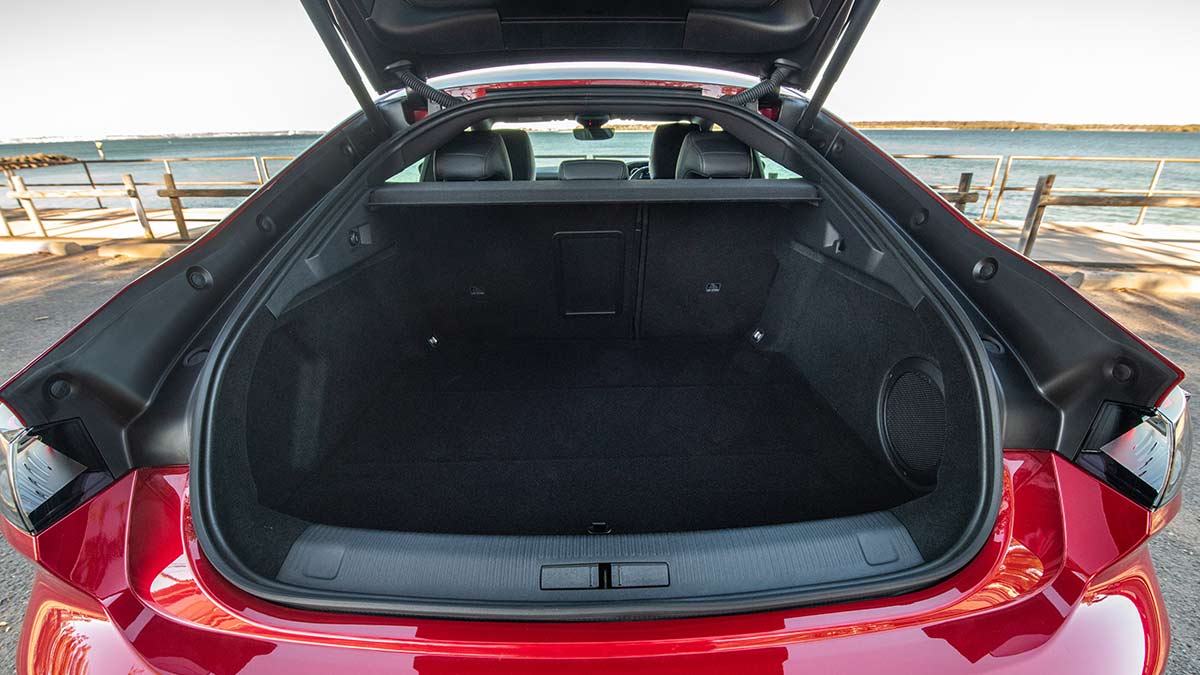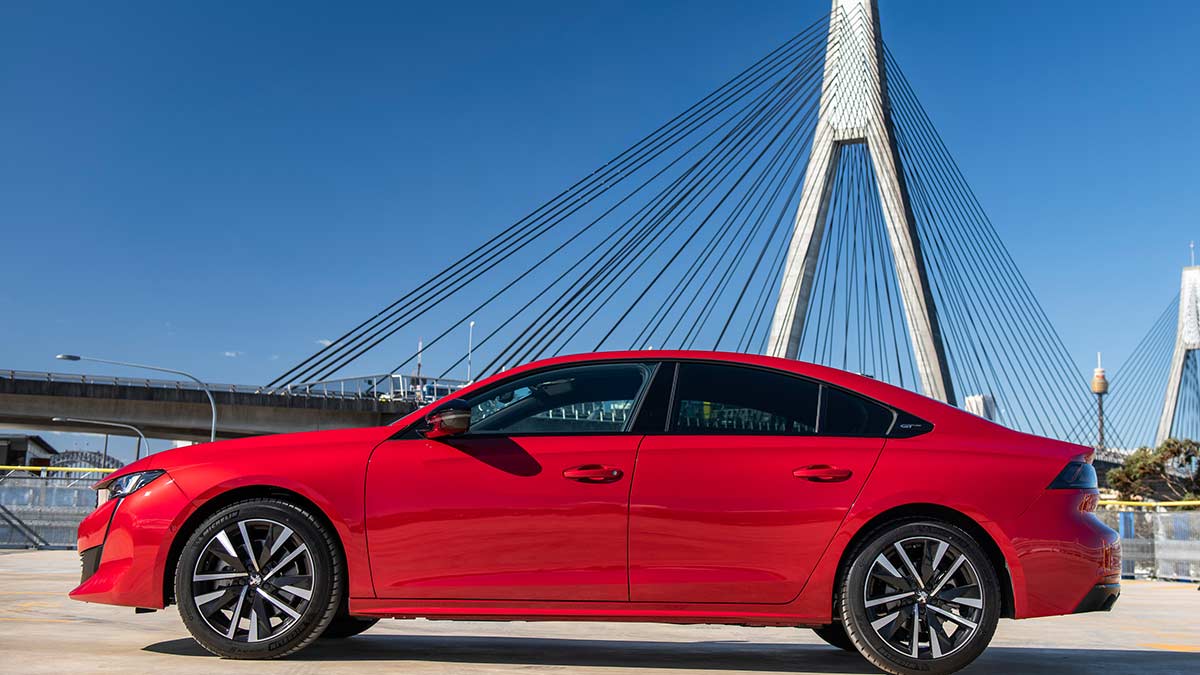SUVs have overtaken station wagons, sedans and hatches as the go-to family car over the past decade, but are they really the better option?
Looking good: 2022 Peugeot 508 Fastback road test review

The Peugeot 508 Fastback looks the business but if you’re regularly in the business of carrying adults in the back, you’ll need to consider the wagon version.
Peugeot’s 508 range is positioned as a stylish alternative to the traditional German fare. It achieves with a judicious mis of exterior shapeliness and interior materials that look high-end and are well-textured to the touch.
The deeply raked roofline that helps the 508 Fastback stand out from its competitors also causes a minor headache for adult passengers in the rear seats, because it restricts room for taller occupants. Throw in the fact there’s not a massive amount of leg space if you’re sitting behind a similarly sized adult and the 508 isn’t the ideal four-person vehicle.
Good news, then that Peugeot also offers a station wagon version without that tapered roof. It’s the go-to 508 if you’re planning on putting people in the back on a regular basis.
On this page
- How much does the Peugeot 508 cost?
- Is the Peugeot 508 safe?
- What's the Peugeot 508 like inside?
- What's under the Peugeot 508 bonnet?
- Is the Peugot 508 efficient?
- How does the Peugeot 508 drive?
- Should I buy one?
How much does the Peugeot 508 cost?
The list price for the Peugeot 508 Fastback is $59,840 for the petrol-powered GT variant. The Peugeot website then states a driveaway price of $69,131 for owners in Melbourne’s 3000 postcode. The Sportswagon is $71,449 on the road, while a plug-in hybrid Fastback is $88,066 out the door.
Opting for the pictured “Mistral Red” exterior colour will add $1000 to the purchase.
The price includes a host of standard gear, irrespective of the vehicle you choose, reflecting the premium status Peugeot is trying to impart on the 508 range.
Nonetheless, Peugeot’s pricing is pushing into prestige territory. The Alfa Romeo Giulia Sport is $64,950 on the road; Volkswagen Arteon is $70,395 and the base Audi A4 is $67,524 off the showroom floor in Melbourne.
The Peugeot’s warranty is five years and unlimited kilometres and servicing intervals are a commendable 12 months/20,000km. Unfortunately, they’re also expensive, with a duration-of-warranty cost of $3394.
Is the Peugeot 508 safe?
ANCAP took the Peugeot 508 into its testing facilities in 2019 and rated the French car highly across all segments.
Adult occupant protection was an impressive 96 per cent; child occupant safety rated 87 per cent; vulnerable road user protection was judged to be 71 per cent and safety assist features earned a 76 per cent score.
The biggest critique was a “marginal” chest protection rating for the driver in the full-width frontal crash test and the fact the windscreen pillars and upper bonnet weren’t friendly in the event of a pedestrian/cyclist incident.
Default safety equipment on the Peugeot 508 includes autonomous emergency braking (without junction or rear cross-traffic assist) that operates from 5-140km/h, active lane-keeping assist and lane-departure warning, adaptive cruise control with speed sign recognition, blind-spot monitoring and a driver-attention monitor.
What’s the Peugeot 508 like inside?
Lush is the best description for the four-door coupe. Peugeot has concentrated on materials in the cabin and the resultant textures and look are first-rate, whether you’re considering it as a premium mainstream vehicle or an entry-level prestige car.
The quilted nappa leather upholstery covers brilliantly bolstered powered seats up front, both with heating and massage functions. The same look appears in the rear, though the pews down the back aren’t quite as supportive.
A sunroof is standard across all variants, as is dual-zone climate control, a 10-speaker sound system, digital radio, inbuilt satellite navigation, smartphone mirroring and a 10-inch infotainment display.
That display is the weakest link in the cockpit. It takes a while to react to inputs and simply can’t match the responsiveness of more modern vehicles.
On a positive note, the piano-key styled buttons below it allow easy access to commonly used functions.
The Peugeot also adopts the company’s “i-cockpit” driver’s display, with a configurable 12.3-inch panel sitting high up on the dash, necessitating the steering wheel be lowered to improve legibility. It is not a classic driving position, though you will adapt to it over the course of a week.
There are four USB ports (two in the front and rear) and storage space throughout the cabin is relatively good, though I’d appreciate bigger cupholders.
Boot space is 487 litres in the sedan or 530 litres in the wagon.
What’s under the Peugeot 508’s bonnet?
A 1.6-litre four-cylinder turbocharged petrol engine propels the GT versions of the sedan and wagon.
Outputs are a respectable 165kW and 300Nm, powering the front wheels via an eight=speed automatic transmission.
Peugeot claims a 0-100km/h time of 8.1 seconds for both the sedan and wagon, which feels about right. Mid-range responsiveness is good.
The PHEV sedan combines the same 1.6-litre engine (though would back to 133kW) with an 81kW/320Nm electric motor.
An 11.5kWh lithium-ion battery pack gives a claimed electric driving range of 55km. Given it costs around $17,000 more than its petrol counterpart, it would want to.
As the RACV has mentioned previously, PHEV’s are a smart solution for families who can utilise the electric-only range on their daily commute and then take advantage of the petrol engine on weekend trips to the holiday home or simply getting away.
In the case of the 508 PHEV, a holiday home is the best option: the battery will only recharge at a household power-point accommodating 3.7kW, so forget about using a public fast charger.
Is the Peugeot 508 efficient?
Peugeot quotes a claimed combined fuel use of 6.3 litres over 100km for both the sedan and wagon; rising to 8.3 litres/100km around town.
We achieved low nines in a 70:30 mix of urban and freeway driving.
The preferred fuel is 95 RON.
How does the Peugeot 508 drive?
You need to appreciate that, despite the looks, the Peugeot 508 Sportback is not a sports car.
Understanding that, it performs well.
The steering geometry is light and fuss-free. It will happily tool around town and then handle higher-speed corners with little issue, courtesy of the low ride height and decent suspension tune.
The 19-inch wheels are still a touch roughshod over minor sharp bumps but then evolve into a decent ride as the pace improves and the suspension comes into play.
The drive mode settings have appreciable feedback, but for mine it’s best to leave it in Comfort.
The engine responsiveness, while not dramatic off the line, improve as the revs pick up.
It basically does what the driver asks it to and employs enough energy and pace to be considered as a solid family car.
Should I buy one?
If you are chasing a good-looking vehicle with decent response to accelerator and steering inputs, the Peugeot 508 Sportback sits high up there.
Yes, it is expensive, and the PHEV version is hard to justify, but the styling is divine and, in an era where people are buying cars because they like the looks, inside and out, the 508 is the embodiment of style, with enough substance to keep the punters happy.
Take it for a spin and see how the Lion-logo-ed machinery empowers you.
The information provided is general advice only. Before making any decisions please consider your own circumstances and the Product Disclosure Statement and Target Market Determinations. For copies, visit racv.com.au. As distributor, RACV Insurance Services Pty Ltd AFS Licence No. 230039 receives commission for each policy sold or renewed. Product(s) issued by Insurance Manufacturers of Australia ABN 93 004 208 084 AFS Licence No. 227678.

